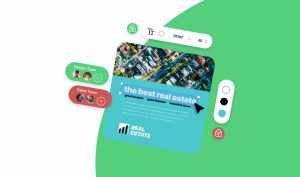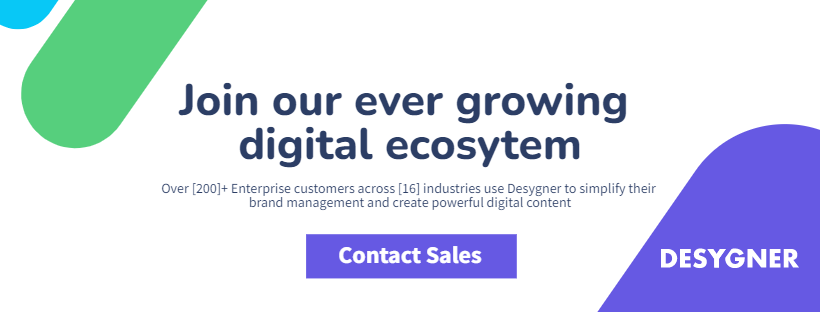What is Sales Enablement | 5 Key Components of a Solid Strategy
Want to know how it feels to sell like crazy? Start by creating a sales enablement strategy.
As a modern salesman, your responsibility is to understand the problems of your clients and prospects. And sales enablement techniques help you address the business challenges your target customers face.
When you equip your sales team with the tools and resources they need to convert leads into customers, your company will see an increase in revenue.
That is the power of sales enablement strategy.
In this blog, you will learn about sales enablement. You’ll also see how an efficient sales enablement strategy can improve your business. And the critical components of a good sales enablement strategy.
Let’s get right into business!
What Is Sales Enablement?
Sales enablement is designed to boost sales outcomes and performance. It offers integrated content, training, and coaching services for salespeople and front-line sales managers enabled by technology.
Sales enablement aims to close more deals and increase sales speed. It has several facets, and while sales operations and training are essential components of the whole strategy, content makes up the lion’s share of it.
Sales enablement also includes content, such as sales slides and demos, that helps sales professionals get their message across. This sales process goes beyond simply putting together a blog post or a white paper.
Recent statistics show that employing a sales enablement strategy increased sales by up to 20% for 76% of the firms.
Sales enablement’s core objective is to provide sales representatives with valuable data about their target market to help them develop a successful sales plan.
What Sales Enablement Can Do For Your Business
A sales enablement plan for your company has numerous advantages and is beneficial in various ways. The biggest one is that it presents an opportunity to completely revamp your selling strategy and move prospects through the sales cycle faster and more efficiently.
A well-planned sales enablement strategy can have a significant impact on the success of your sales team. The revenue of your business is bound to increase when your salesforce is equipped to convert leads to paying customers.
Hence, here are a few ways sales enablement strategy is vital for your sales staff.
1. Boost Sales Readiness
During sales enablement, sales representatives can learn the skill of sales readiness. It gets the representatives ready for face-to-face communication with clients or prospects.
Sales enablement can aid sales representatives in getting ready for what lies ahead because you need a distinct strategy at each phase of the buyer journey.
In a sense, sales enablement can improve your sales team’s ability to communicate with clients.
2. Increase Productivity
It can free up time representatives spend on administrative tasks to concentrate on more productive aspects of their jobs. Automating repetitive and manual tasks frees up salespeople’s time, allowing them to focus on selling instead of spending hours doing non-selling work.
Obtaining data regarding leads can also make reps more effective. Accurate and adequate metrics can accomplish this by determining which leads are more certain to be a better match and which leads they should devote more effort to pursuing.
This rise in output can potentially lead to increased revenue for your company.
3. Enhances Effectiveness
Many things need to be considered by your sales team. Lead generation, relationship management, and transaction closing are necessary for them to succeed. Businesses often update their product or service. Sales teams must be aware of these changes to help the business achieve its goals.
If there is no sales enablement plan, all this could be frustrating.
The sales team is more effective with sales enablement. It provides sales representatives with the necessary equipment to complete more deals faster. The sales procedure is streamlined and made more effective with the correct tools.

Discover Sales and Marketing tools that can help increase productivity and improve lead conversion rates
Who Owns Sales Enablement?
It can appear to be a simple question at first. Choosing who will be responsible for sales enablement determines how your approach will come together and function.
Every case will be different, and there are countless methods to set up a sales enablement strategy within an organization. Each setup will vary somewhat depending on the resources available, the overall goals, and the objectives.
There are two perspectives on who owns sales enablement – Sales and Marketing.
Sales Perspective
Doesn’t it make sense that the sales team should be in charge of this program if the goal of sales enablement is to increase sellers’ productivity and capacity to close deals? After all, the term “sales enablement” is for a purpose.
The extra benefit of having the department feel more accountable for success is allowing sales to manage the entire initiative.
Sales will determine the general direction for strategy regarding how Sales and Marketing work going forward in a sales-owned arrangement. In this scenario, marketing will still be responsible for content generation and maintenance.
A sales-owned strategy is optimal for businesses looking to boost collaboration, communication, and sales readiness.
Marketing Perspective
The traditional way to answer this question is to assign marketing responsibilities for sales enablement. The reason is that a lot of the work goes into increasing marketing’s overall effectiveness, even though sales enablement eventually leads to closing more deals more effectively.
The marketing team commits to completely restructuring their relationship with content when they start a sales enablement journey. They understand that their content must be more accessible, speak more directly to the demands of the buyer, give sales the ability to generate their own certified, customized material, and must increase their return on investment.
Marketers spend their entire careers worrying about such kinds of issues. Therefore, it makes sense that sales enablement would be a marketing concern.
5 Key Components Of A Successful Sales Enablement Strategy
The efficiency of the sales process is a goal shared by both the sales and marketing departments. Prospecting through final sale closure can take a lot of time, often over several months. However, businesses can implement strategies and procedures to help improve sales.
There are several elements that makeup sales enablement. The following are the essential components you must pay close attention to if you wish to adopt a feasible strategy:
1. Sales Content
Relevant content must build any practical sales approach.
A strong sales enablement strategy must include sales content. The fundamental tenet of sales enablement is that salespeople should add value to every engagement with the client. To achieve this, they must access the appropriate content at every stage of the sales process.
There’s a significant difference between sales and marketing content. The key difference between these concepts is in the respective functions. On the one hand, marketing aims to ‘entice’ people with things they like to see and interact with. On the other, Sales’ main job is to convince prospects to take action.
As for sales content, we can classify it into two:
- Internal Sales Content: It is written with the company’s sales representatives in mind. The objective is to increase the reps’ familiarity with their product line.
- External Sales Content: Assets that users can download and read or view at their leisure are in this content category. The content must be valuable to avoid wasting a customer’s time.
Build your Sales Content Strategy Now
2. Training and Coaching
2020 may seem like a lot back, but the changes that came with it still exist today. The post-pandemic era has seen many businesses transition to provide means to operate virtually. In this regard, remote selling is fast becoming a norm.
Data from HubSpot’s 2021 Sales Enablement study shows that, compared to sales executives who stuck with their present models, just 50% of those who switched their teams to remote selling in 2020 met or exceeded their revenue targets.
Therefore, remember that most sales teams will implement a remote approach in the coming years as you consider how much catching up you may have to do for your own sales teams. Now is the best time to switch to a remote selling approach to prevent widening this revenue difference.
Sales enablement must make the necessary effort to ensure that the team embraces new sales representatives. Remote onboarding is crucial to ensuring that new hires are engaged, enthusiastic, and equipped for success when teams cannot meet in person.
3. Content Localization
Making an emotional connection with global audiences is essential for a vast reach. It begins with speaking to potential consumers in their language and continues by offering a specialized service based on their needs and wants. Content localization is helpful in this situation.
Content localization is the process of adapting previously created content for your primary market to meet the needs of your new target audience. Despite being frequently used interchangeably, it’s not the same as simple translation.
Desygner helps you to create excellent content that can be localized to match the taste of your target audience. It has an “Unmatched AI-powered Customization Campaign” that allows you to:
- Create the campaign structure once, and Desygner will automatically cascade it to your users in line with the needs of your business.
- Gather and analyze data that will automatically improve the algorithm of your marketing campaign. The marketing localization engine offers options to replace the content across all materials automatically.
- Create customized campaigns using personalized assets and enable customization for thousands of users in an instant.
- Save all your campaigns as drafts, allowing administrators to review and publish them on their own time.
- Build a first-class set of templates for your primary print and digital marketing pieces.
- Create as many sub-workspaces as required to localize your content automatically.

With Desygner as your all-in-one content localization platform, you’ll save a lot of costs and time for your company.
4. Data Reporting and Analysis
Data is the best ally you can have for your sales enablement strategy.
An effective sales enablement strategy should assist you in producing solid reports and provide you with data-driven insights. You can monitor your sales process, fill up any gaps, and maintain everyone’s alignment with organizational objectives with the aid of reports. Plus, you can watch your team’s and your products’ effectiveness using these analytics.
A few critical sales enablement KPIs are a win rate, average sales cycle duration, average deal size, and sales productivity for the organization and individual salesperson.
You may go even further and monitor the content you send out if you have the appropriate technologies in place.
The following are examples of questions to narrow the results of your analysis:
- Does your staff use the content?
- Do your customers read your emails and click the links in them?
- How many emails did you send before receiving the first call?
- How many calls did you receive before finalizing a deal?
5. Technology Tools
You must implement the appropriate technology once your processes have been specified and you know the metrics you’ll use. The technology you select must complement your goals and can significantly impact how successful your business operates.
A thorough sales enablement strategy should give sales the resources, guidance, and assistance they require to succeed.
Thousands of these technology platforms and solutions are available on the market, all claiming to enhance your sales activities. Tools for CRM, sales management, coaching, email automation, communication, and so forth are a few examples. Every tool has unique features and functions, and not every tool is appropriate for every user.
Many firms have realized how Desygner can boost revenue generation. One such organization is Keller Williams Realty, a force to reckon with in the real estate industry in America.
This case study gives valuable insights into how much progress Keller Williams Realty has made as a business since it decided to embrace Desygner.
Final Words
Giving your sales staff the necessary tools is vital to a successful sales enablement plan. It entails offering the right technology, software, and creative material to cut down on waste and increase productivity.
Sales enablement offers too many benefits to overlook. Your sales staff can accelerate sales cycles and close bigger deals.
Implementing a sales enablement strategy won’t happen fast and frequently requires a significant change to your routine business practices and internal culture.









